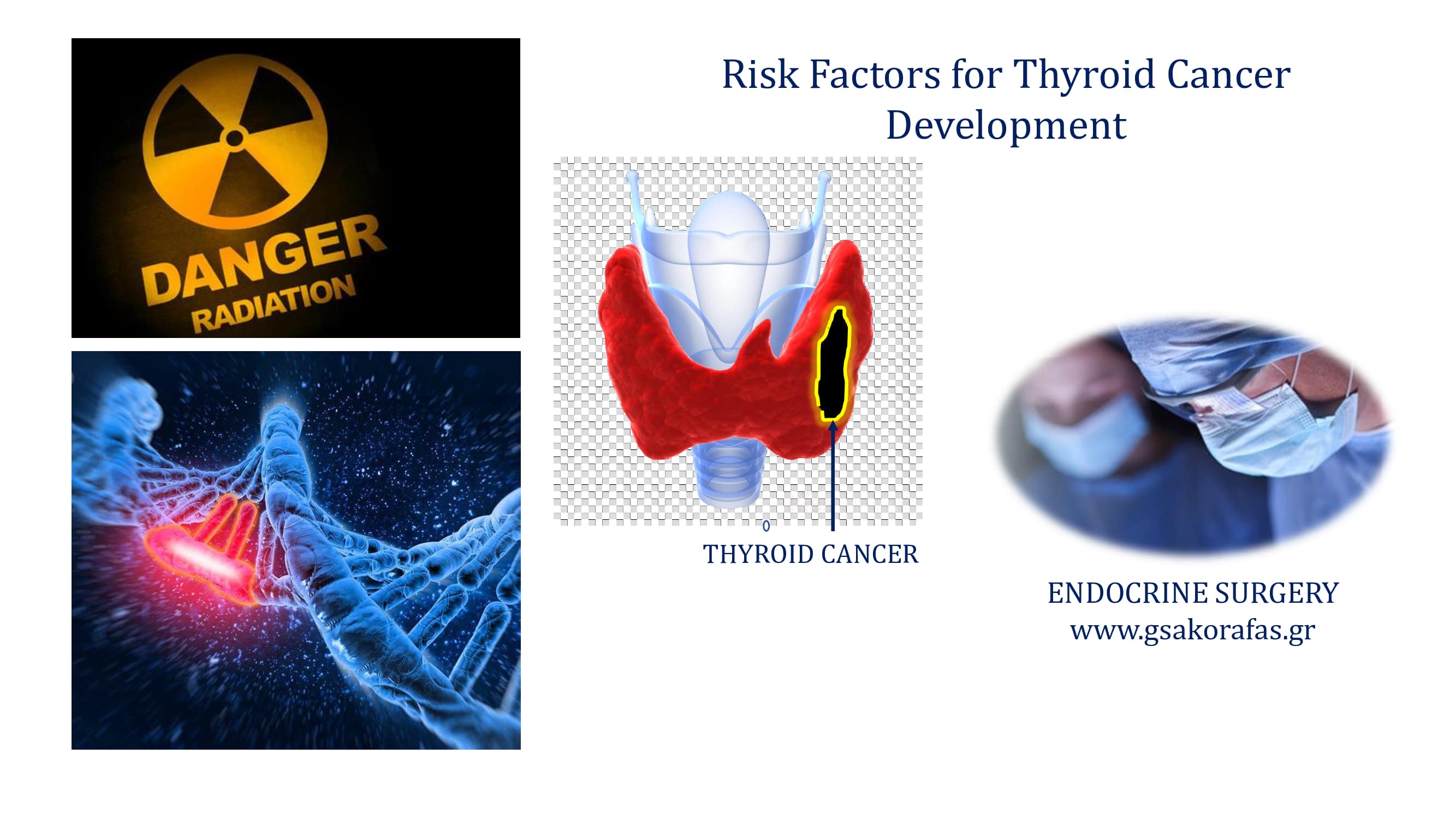A. MODIFIABLE RISK FACTORS
i. DIET LOW IN IODINE
Most commonly associated with follicular, but also with papillary thyroid cancer (TC) (when associated with exposure to radioactivity)
ii. RADIATION EXPOSURE
Especially during childhood (including radiation for medical reasons or radiation fallout from power plant accidents or nuclear weapons). Interestingly, TCs developing following radiation therapy (for some cancers, such as lymphoma, Wilms tumor, or neuroblastoma) are more aggressive than other thyroid cancers (TCs).
B.NON-MODIFIABLE RISK FACTORS
1.GENDER and AGE.
TC is three times more common in women than in men. The risk peaks earlier for women (often in their 40s or 50s when diagnosed) than in men (usually in their 60s or 70s).
2.HEREDITARY CONDITIONS / GENETIC FACTORS
i. Medullary TC. In patients with FMTC (Familial medullary TC) or in MEN2 syndrome (type a or b)
ii. Familial adenomatous polyposis
iii. Cowden disease
iv. Carney complex, type I
v. Familial non-medullary TC
vi. Strong family history of TC

